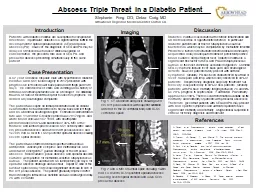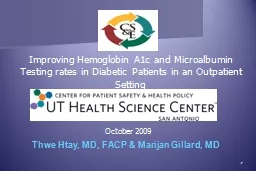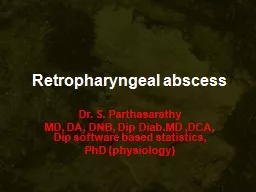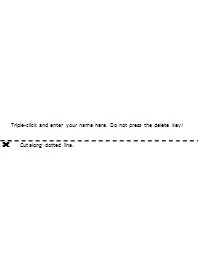PPT-Abscess Triple Threat in a Diabetic Patient
Author : priscilla | Published Date : 2022-02-10
Stephanie Fong DO Debra Craig MD Arrowhead Regional Medical Center Colton CA Introduction Patients with diabetes mellitus are susceptible to complicated infections
Presentation Embed Code
Download Presentation
Download Presentation The PPT/PDF document "Abscess Triple Threat in a Diabetic Pati..." is the property of its rightful owner. Permission is granted to download and print the materials on this website for personal, non-commercial use only, and to display it on your personal computer provided you do not modify the materials and that you retain all copyright notices contained in the materials. By downloading content from our website, you accept the terms of this agreement.
Abscess Triple Threat in a Diabetic Patient: Transcript
Download Rules Of Document
"Abscess Triple Threat in a Diabetic Patient"The content belongs to its owner. You may download and print it for personal use, without modification, and keep all copyright notices. By downloading, you agree to these terms.
Related Documents














